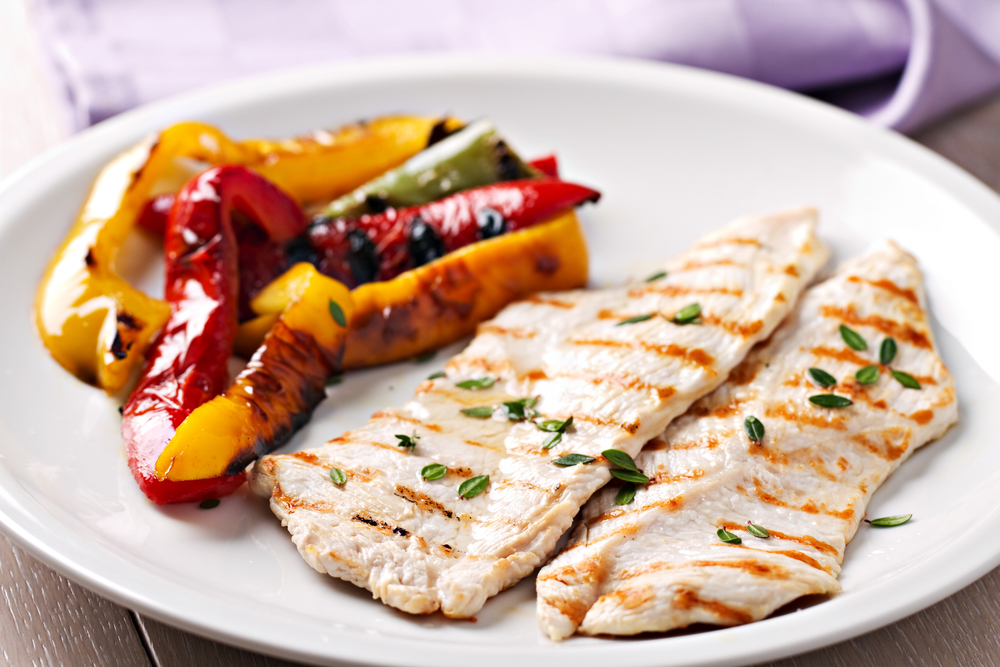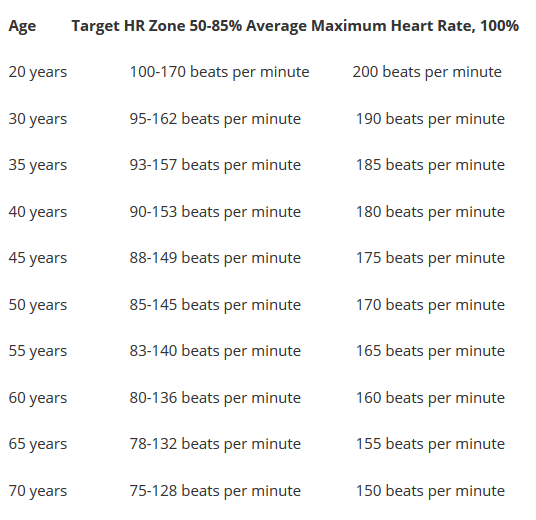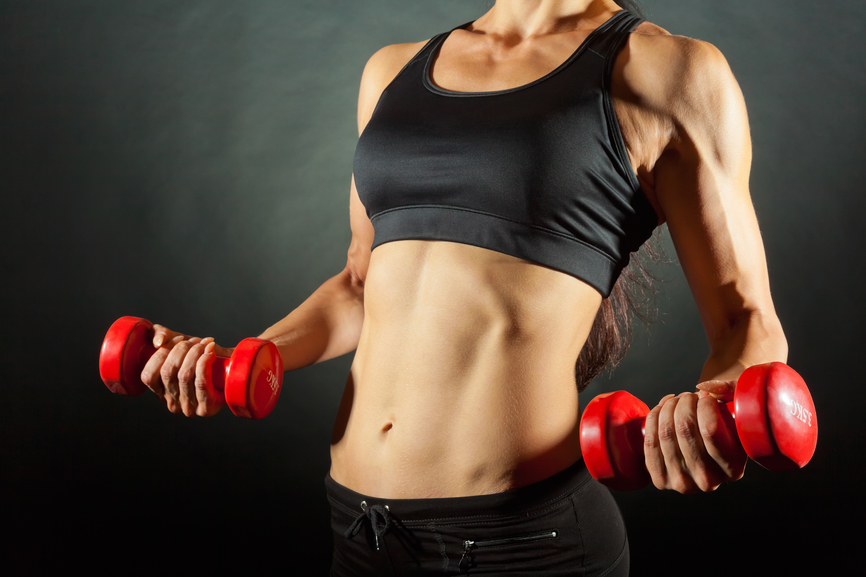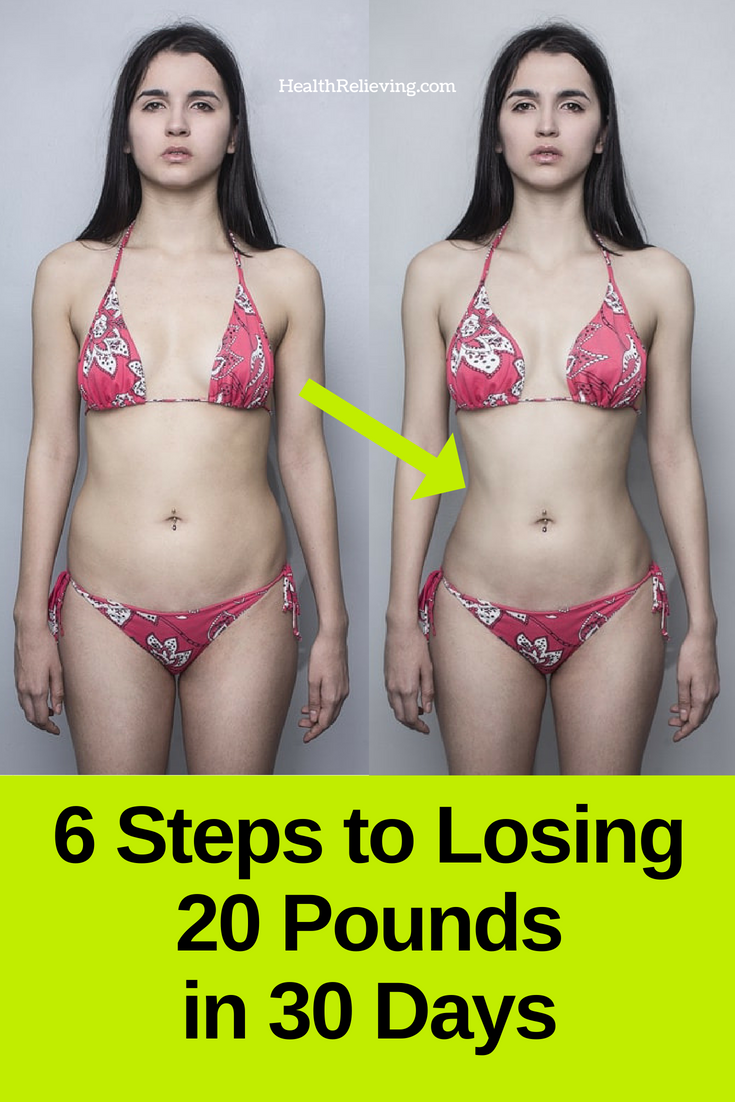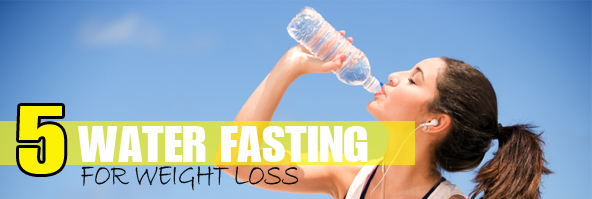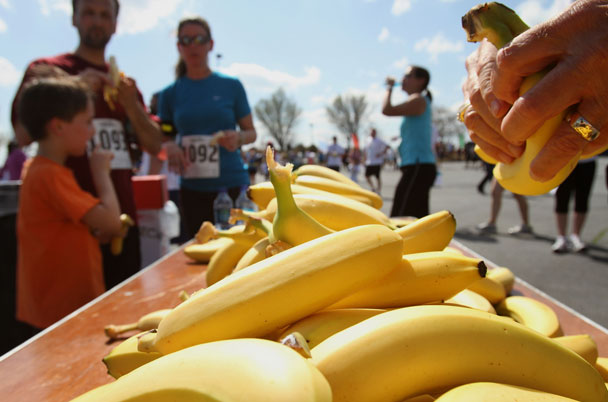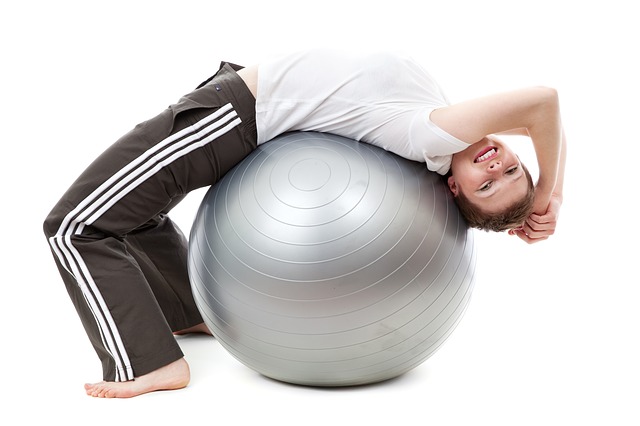6 Steps to Dropping 20 Pounds in 30 Days (You CAN Do It)
Are you looking for an exact process to follow that will help you to lose 20 pounds in 1 month or less?
If so, you’ve absolutely come to the right place as below is a step-by-step guide that explains how to lose weight quickly. Most importantly, the 6 steps outlined are proven to be effective for fast fat loss and can be followed by anyone, including YOU.
Ready to lose weight fast? Let’s take a look at the 6 steps.
Article Summary
How To Lose 20 Pounds in 30 Days
1. Eating at least 2 raw fruits and/or vegetables before every meal
Raw fruits and veggies fill you up fast an can take the edge of your hunger. As a result, killing your hunger and cravings before you have your main meal means that you will eat less in every meal (a faster way of losing way without getting too hungry).
Important – Drinking fruit juices DO NOT count because they are high in sugar that will make you gain weight. They have no fiber to kill your appetite and therefore, will increase you cravings to eat more.
An example of what to eat would be 2 carrots, an apple and a stick of celery. You don’t need to get too scientific with it, just consume 2 pieces of raw fruit or vegetables before each meal and you’ll be well on yoru way to success.
Quick Tip: You can drink at least 8 oz. of water with your raw fruits and veggies to really kill your hunger before you eat.
Highly recommended before meals: green bananas, carrots, apples, peaches, broccoli.
Now, onto step 2…
2. Eating a 0-to-300 calorie meal after eating your raw fruits & veggies
Step two in your quest to lose 20 pounds is consistently eating up to 300 calories in your meals (but not more). You can eat anything you want in every meal—after doing Step 1—as long as they will not exceed 300 calories.
You can check this list of weight loss foods and drinks that are 0-to-300 calories.
Got that? Let’s see step 3…
3. Eating UP to FOUR 0-to-300 Calorie Meals Per Day
Getting your diet right is going to be the biggest key to losing 20 pounds quickly. It can also be the most mentally-challenging part of your 30 day quest to lose weight quickly. Obviously, consuming less calories than you are burning off is going to help you to drop weight.
Here are some basic diet guidelines to stick to:
- You want to aim to consume 3-4 low-calorie meals per day.
- You can eat your 0-to-300 calorie meals whenever you want in an interval of 2-to-4 hours apart.
- Eating 1, 2, or 3 meals a day is alright but don’t go over 4 meals a day.
- The primary reason you will lose 20 pounds quickly is because you are eating less than 1200 calories everyday (less than 300 calories each meal excluding the fruits and veggies).
- Optional: Eating your meals with fasting will help you lose weight quicker. Check this intermittent fasting schedule at NowLoss.com.
Let’s move onto exercise (step 4)…
4. Track Your Heart Rate and Exertion
Using a polar heart rate monitor will keep your intensity at lower levels instead of always going too hard. As you get older, your body will start to need lots of rests and recovery days than your younger years.
You must be working out in a heart rate zone 60-85% of your hypothetical maximum heart rate according to the American Heart Association in order for exercise to be effective for weight loss. See the age breakdowns below:
- Take note that your medications and genetic variability can affect and modify your maximum heart rate—such as your blood pressure medication—making it lower.
- The percentage of the maximum heart rate training method is not absolute, but a good substitute for exertion. A 50% intensity for one hour on the treadmill is not really working hard, is it?
- Monitoring and knowing your heart rate will give you the idea of your actual exertion.
- Compared to the lab-based calorimetry—mostly about the moderate intensity lower body exercises—the accuracy of the estimated energy expenditure on polar monitors has been shown to be very high.
Got it? Let’s look at step 5…
5. Cardiovascular Training
Different exercises burn calories, be it a cardio, strength training, or dancing the night away. The most important thing to keep in mind is that burning additional energy will contribute to your weight loss. In addition to weight loss benefits, the cardiovascular training is good for your heart, lungs and circulatory system. In addition, the endorphins released during cardiovascular exercise will help you cope with stress!
Listed below are some key benefits of aerobic exercise:
- Regulates depression
- Interrupts anxiety
- Promotes focus
- Promotes brain growth
How to train for weight loss:
- Begin your cardio training with simple to moderate exercises. You can check the prescription for beginning cardio training at exercise.about.com if you’re a beginner.
- For sedentary or inactive people, a brisk walk or light jog pace will do. Be sure invest in some good shoes, especially when you are into running so that your feet will always be comfortable.
- You should aim for daily activity, and 30 minutes is ideal. Wondering if you can handle 30 minutes per day? Well, just ask yourself how bad you want to lose weight… Are you looking to lose 20 pounds in 30 days? If it’s yes, then it’s time to make a 30 day commitment.
- start your exercise with 25 to 30 minutes for 2 or 3 days a week. The first 5-10 minutes will be an easy warm up pace (50% of your max heart rate, or about a 4 or 5 out of 10 in terms of perceived exertion). You can start increasing the intensity, or duration, or both as you increase in your fitness.
Next, step 6…
6. Strength Training
Regular cardiovascular exercise will help you lose weight, but strength training will help promote the growth and maintenance of lean muscle mass.
Why lean muscle mass is important for weight loss:
Resistance, or weight training, is often thought of as purely a toning-based activity. The real reason behind incorporating resistance training into your workout routine is that lean muscle mass promotes a faster metabolism and increased daily calorie expenditure. Your body literally must use stored energy (stored body fat) to keep lean muscle mass alive. In short, resistance training helps you to burn calories during the day when you’re not exercising!
Below are some additional benefits to strength training:
- Mood enhancement
- Increased bone health and lean muscle mass
- Better coordination and body mechanics
- Disease prevention
Strength training for beginners includes hitting all the major muscle groups through compound exercises, or exercises that need movements at multiple joints.
The more advanced you become in your training, the greater chances of moving onto less stable equipment like free weights you can do. But during the first two weeks, it would be best to start with exercises that have familiar movements as:
- Leg press
- Shoulder press
- Chest press
- Lat pull down
- Seated row
Better start with a weight that you can handle (about 6 out of 10 perceived exertion and attempt to do 12 to 15 repetitions) and do it twice (two sets of 15 repetitions). When you notice that you are becoming stronger, you can increase the weight and decrease the repetitions but do it three times. You can work yourself towards 8 or 10 repetitions for 3 sets.
Aim for at least three resistance training sessions per week (in addition to your 30 minutes of cardiovascular exercise). Stuck for ideas? Try these DIY resistance training exercises for hips, butt and thigh toning.
Summing Up
As you can see, losing weight is actually fairly simple. Be sure to follow the guidelines of eating fruit and vegetables before every meal, controlling your calorie intake to 300 calories per meal, and simply engaging in exercise each day for the next 30 days and you will lose the weight that you desire.


